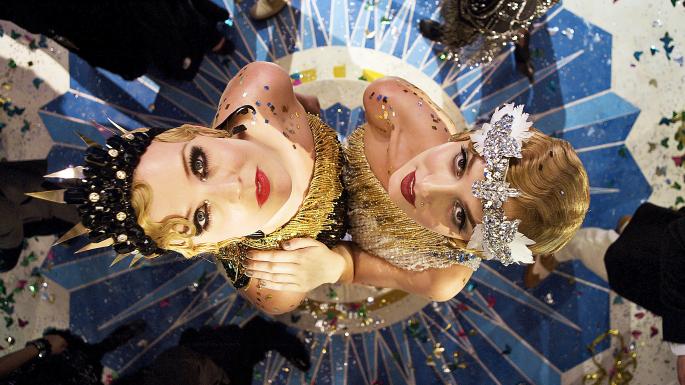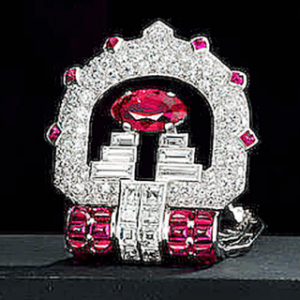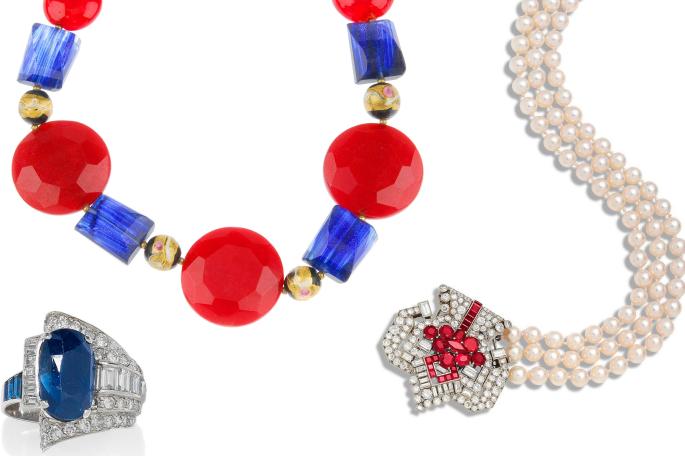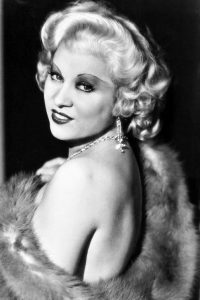
Art deco gems bring glamour to a portfolio
Pieces from the 1920s and 1930s have increased in value more than property over the past ten years.
The phrase art deco is synonymous with elegance and style – and, for the style-conscious collector, art deco jewellery could be a savvy investment.
Experts say that art deco jewellery, which became popular in the 1920s and 1930s, has held its value better than other jewellery styles. According to a report by Bonhams, the auction house, art deco and belle époque jewellery pieces increased in value more than property between 2006 and 2016 – soaring by 88 per cent, compared with house prices which rose by 47 per cent over the same period.
Emily Barber, the jewellery director for Bonhams London, says: “Art deco jewellery – which is usually defined by geometric, angular shapes – still looks new and contemporary, even 100 years later. The time when jewellers were producing these pieces was a period of enormous technical innovation; jewellers were pushing the boundaries in terms of what you could achieve when setting gems and combining them with platinum, which is a very difficult metal to work with.”
Prices can hit highs of tens of thousands of pounds for the best pieces. “Much of this is based on the designer; Boucheron, Cartier, Van Cleef & Arpels or Chanel will always hit top-level prices,” says Angela Marshall, a valuer at Cheffins, the auction house.
A ruby and diamond brooch made by Cartier in 1931 sold for more than $350,000 ( 272,000) at Bonhams in New York this year. Its estimated value was $150,000.
Similarly, an art deco Boucheron brooch and ring sold by Fellows Auctioneers fetched more than their estimates. The brooch was valued between 8,000 and 12,000, and the ring between 3,000 and 4,000.
“Had these pieces not been by Boucheron, we would have set the estimates at around 4,000 and 1,500, respectively,” says Nicola Whittaker, a valuer at Fellows Auctioneers.
The most prized items tend to be necklaces (whether they be charm necklaces or any other kind), brooches and rings that are linear with geometric designs or flowers, and set with jade, rubies, diamonds or emeralds, says Ms Marshall. “Rings in particular, often featuring an older-cut diamond, but remodelled with more contemporary baguette-cut shoulders or used as highlights, are in high demand. Add in a beautiful, coloured central stone, such as a natural sapphire, and the price can rocket again.” That’s why pieces like a 2 carat oval engagement ring are still in high demand today.

This ruby and diamond clip brooch by Cartier, circa 1935, sold for 272,000 through Bonhams auction house
The limited availability of art deco jewellery is one of the driving factors in this market – at the time of manufacture designers would typically only sell a handful of each piece, unlike today’s mass-produced items.
Many of the fashion houses of the 1920s to 1940s included subtle initials or hallmarks on their jewellery that are not easy to spot, and these can make a significant difference to the selling price. Ms Whittaker says: “For any piece of jewellery, its composite parts are intrinsically valuable. The metal weight alone will be a large consideration when valuing an item, and workmanship is also a big part of an item’s worth.”
Would-be collectors could start off with costume jewellery in the art deco style. Ms Marshall says: “Often green glass was used in place of real emeralds, or paste rubies and sapphires are used, and while these do not generate the same prices as their counterparts, they can represent an entry into the market for new investors with prices starting from around 100 for a pair of Chanel faux pearl earrings and a couple of hundred pounds for long necklaces.”
Costume jewellery by respected names, such as Trifari, Coro, Miriam Haskell, Dior and Chanel, can represent a good investment.

Bottom left: this oval-cut sapphire and diamond dress ring, circa 1935, is up for auction through Bonhams, with an estimated value of 5,000 to 7,000. Centre: costume jewellery such as this necklace, sold by Fellows Auctioneers for 65, is a good way to start an art deco collection. Right: a ruby and diamond clip, circa 1930, on a pearl necklace up for auction with Bonhams has an estimated value of 10,000 to 15,000
Tips from the experts
● Only collect something that you will enjoy having and wearing.
● Even if your budget is small, buy the best that you can afford; you will appreciate it in the long term.
● Once you know what you want to buy, find out as much as possible. Read the condition report carefully.
● Inspect an item thoroughly to see if there are any marks – these are the key to finding out who made it and when; there could be a signature, an inventory number, or hallmarks that indicate the country where it was made. Ms Barber says: “There can also be really small marks that are workshop marks. When these are identified you can sometimes attribute the jewel either to the jeweller or the artist who designed it. You should assess not only the front but the back of an item: if it is well finished on the back, as well as the front, it is usually an indicator of high-quality manufacture.”

